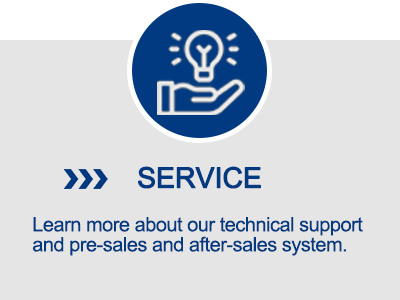Common faults
The common faults of the hydraulic system of the four-column hydraulic press are three: oil temperature too high, air entering the system, and oil contamination. Research has shown that 75% of failures are related to these three factors.
1. Oil temperature too high
Hydraulic oil is the medium for hydraulic transmission in traditional work. If the oil temperature exceeds a certain range, the viscosity of the hydraulic oil will be damaged, the lubricating oil film will become thinner, and the working efficiency of the hydraulic press system will be greatly reduced. If there is a leak, it will not only significantly increase mechanical wear, but also damage the cooperation clearances between various parts, leading to serious wear between the pump and valve, increasing frictional resistance, and causing the valve core to jam. At the same time, high oil temperature will cause the oil to vaporize, leading to cavitation of hydraulic components. In addition, high oil temperature will accelerate the aging of rubber seals, reducing their lifespan significantly. This will also lead to loss of sealing, ultimately causing hydraulic system leaks.
2. Large amount of air mixed into the hydraulic system
The presence of a large amount of air mixed into the hydraulic system will cause unstable movement of hydraulic locking actuators, corrosion and dry friction of hydraulic components due to air, significantly shortening the lifespan of hydraulic components, as well as vibration and noise in the pipeline and related equipment, as well as symptoms such as block creep.
3. Contamination and deterioration of working hydraulic oil
If the hydraulic oil is exposed to harsh environments for a long time, impurities and contaminants may mix into it. If contaminated hydraulic oil enters the pump and valve, it will cause scratches and damage to their surfaces, resulting in more serious leaks. In such cases, the temperature of the oil will significantly increase, resulting in insufficient pressure, unstable pressure holding, and symptoms such as sluggish movements of the actuators and sliding of the slider after stopping.
Fault analysis and troubleshooting
Methods for troubleshooting and eliminating faults in the four-post hydraulic system.
1. Insufficient pressure rise in the main cylinder
The electromagnetic relief valve leaks pressure. There may be certain defects in the manual function, which cannot adjust the pressure to the required level. The electromagnetic valve core continuously performs the same action, causing friction with the valve hole, resulting in wear and leakage at the control port during relief. There may be blockages in the main valve core damping hole, causing the main core valve to open relief at relatively low pressure. Without a confirmed seat cone, there may be oil leakage at the main core and seat hole seal. The electromagnetic valve may burn out, and it cannot be closed when the slide valve block cannot be switched. The valve core jamming in the open position may also cause the pressure in the main cylinder not to rise.
To eliminate the causes one by one, the specific method is to carefully check the positions of various flow valves, then analyze in detail the possible causes of faults that may occur step by step, and deal with the identified causes accordingly. Make relevant adjustments to the relief valve handwheel, check the pressure and positions of various flow valves, analyze the causes of faults in each part of the relief valve, adjust the relief valve handwheel, adjust the pressure to 26 MPa, and tighten the handwheel nut. The gap between the valve core and valve hole must be controlled at ≤0.008mm. The relief valve damping hole and all parts must be cleaned to ensure they are unobstructed. When replacing the main valve core mechanism, seal rings must be used with the valve seat hole to prevent oil leakage. When the electromagnetic valve coil burns out, it must be replaced and ensure that the valve core switching is flexible.
2. The spring of the main cylinder filling valve is broken, and the sealing of the filling valve is not up to standard.
Troubleshooting method: Replace the spring and grind the sealing surface of the filling valve to ensure there is no leakage.
3. Damage to the main cylinder seal ring, causing oil to flow between the upper and lower chambers.
Troubleshooting method: Replace the seal ring. If there are scratches on the inside wall of the main cylinder, they should be repaired and smoothed to avoid damage to the seal ring.
4. Abnormal noise in the hydraulic system, with relatively large vibrations
The possible cause is the blockage of the tank's filter by foreign objects, which obstruct the hydraulic pump's oil suction.
Troubleshooting method: Clean the filter. During the inspection, not only check for oil contamination but also filter or directly replace the contaminated oil with new oil.
XIRO-electric servo press/XIRO-hydraulic press/XIRO-mechanical powder compacting press
XIRO, an automated machine manufacturer, 24-hour response factory, with a professional engineering team 24 hours online technical service. All machines are CE certified, come with a 2-year warranty, and lifetime service. With 20+ years rich production experience, our equipment is exported to more than 60 countries. We provide customizable press machines and comprehensive productivity solutions, ensuring it's the most competitive, accurate solution to any assembly requirement! XIRO wishing you prosperity!
 |  |  |






